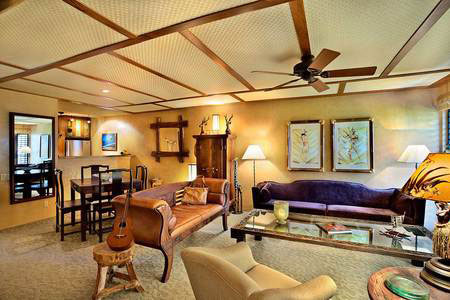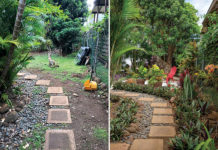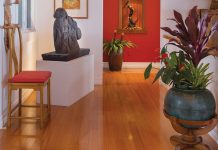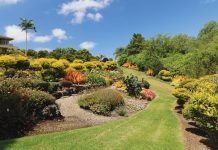 Q: How can I successfully use texture in my interior design?
Q: How can I successfully use texture in my interior design?
A: One thing that is fascinating about texture is that it conjures up emotion by creating psychological warmth. In a cooler location like Upcountry, use of rough-textured stone, as on a fireplace, lends the room a feeling of warmth. On the other hand, smooth, slick materials, such as glass or polished marble, give a cooling effect that’s great for warmer climes. The same applies to fabrics—a nappy fabric-covered sofa would feel too hot in Kihei, but cozy in Kula.
To use texture to your advantage, always look to find a balance between smooth and rough, cool and warm. If a room is beginning to have too many cool characteristics, add texture for warmth: some roughly hewn wooden cabinets, a toothy, knitted throw blanket, or a distressed wood floor.
Roger Gagon, ASID | Island Design Center
Q: I want to know more about green products; are they just an expensive trend?
A: With the cost of energy and our planet’s dwindling resources, be assured green is here to stay. There is so much information out there now about green products, you cannot miss it. But don’t just scan ads for products; if something interests you, I really suggest you research it—see if it’s got a Greenguard label, or whatever governing accreditation applies to that product. There are many articles on the web reviewing whether green products live up to their claims.
One of the biggest misconceptions about green design is that it’s more expensive. Sometimes initial costs are a little more, but you must consider the long term. Sure, compact fluorescent bulbs are pricier, but over their lifespan, they are far less expensive and much more efficient. Green products can pay for their added cost with energy savings, and actually save you money.
Lisa Walsh, ASID | Ahura Designs
Q: I’m dreading choosing windows for my new house. Any advice?
A: Look at your needs on a room-to-room basis. Sliders and single-hung windows are the most economical options and come in a variety of sizes. However, their versatility is more limited than double-hung windows. These have the benefit of moveable top and bottom panels, offering ventilation options in rainy/windy weather. Double-hung windows work especially well under eaves, a combination I highly recommend for the windward side of the house, or if you are building on the windward side of the island.
If you’re short on space, casement and awning windows offer maximum ventilation for their size. Consider these in small bathrooms or closets, anywhere you’d want more air circulation, but don’t have room for a larger window.
On the other hand, if you have plenty of ventilation and space, consider using a fixed window to frame a view. Usually surrounded by operating windows, these clear panels create an unobstructed view corridor to the outdoors.
I rarely recommend single-pane windows. For the price, the double-pane upgrade offers so much more in terms of insulation from heat, cold and noise. In fact, there’s a relatively new tax credit for using a specific type of double-pane glass that is manufactured to be more energy efficient. You can recoup up to $500 of the cost of the upgrade.
Christopher C. Smith | Smith Builders, LLC





